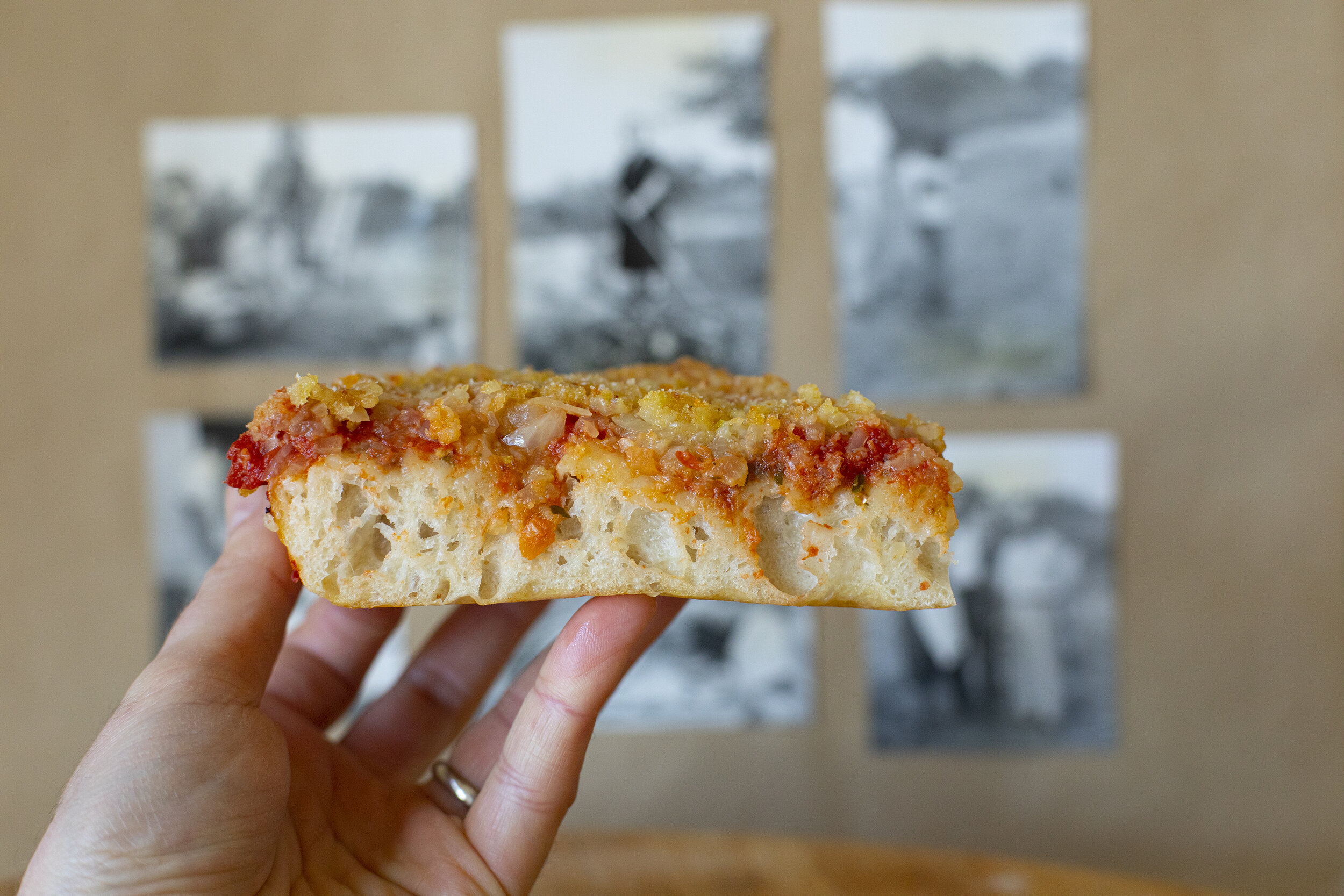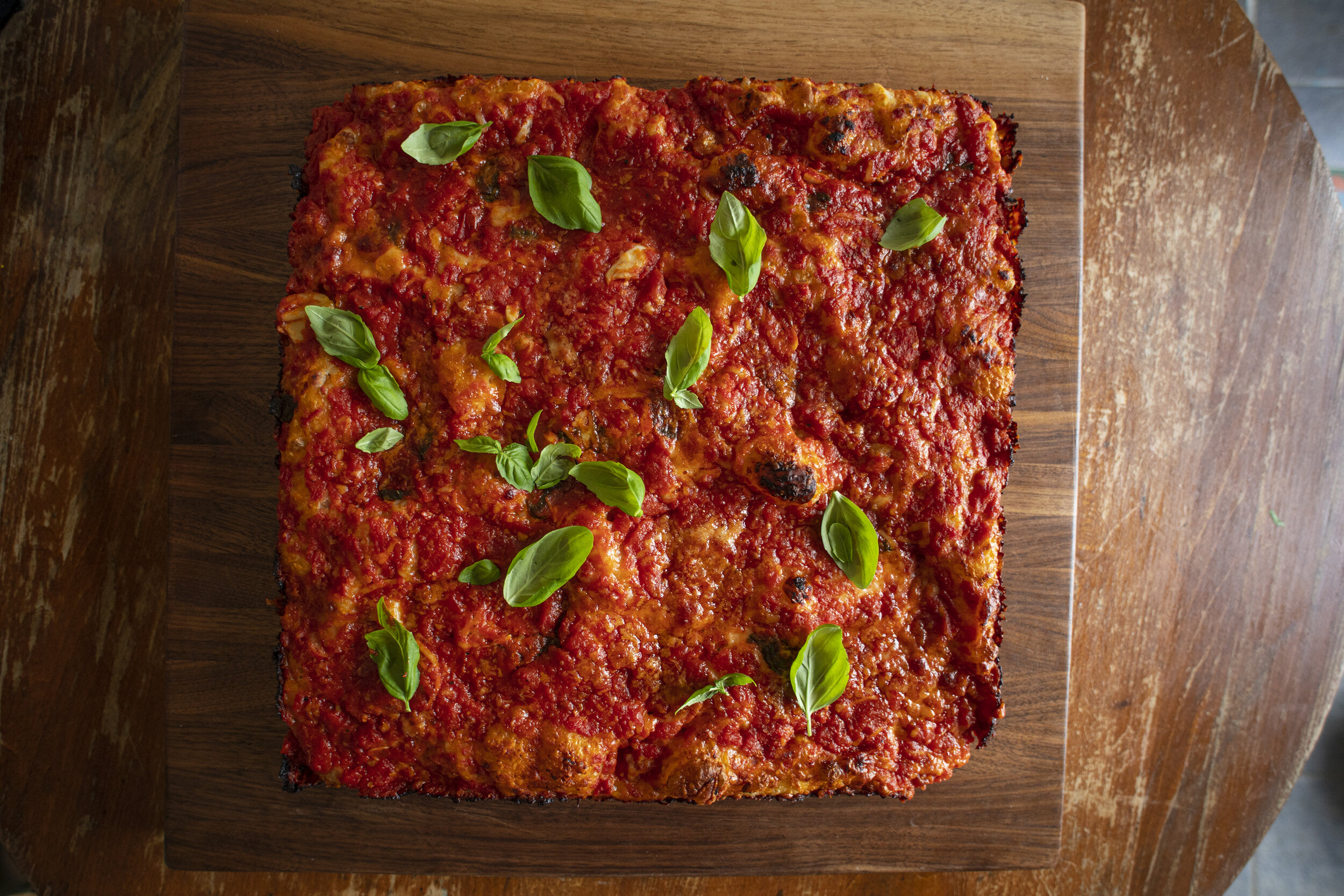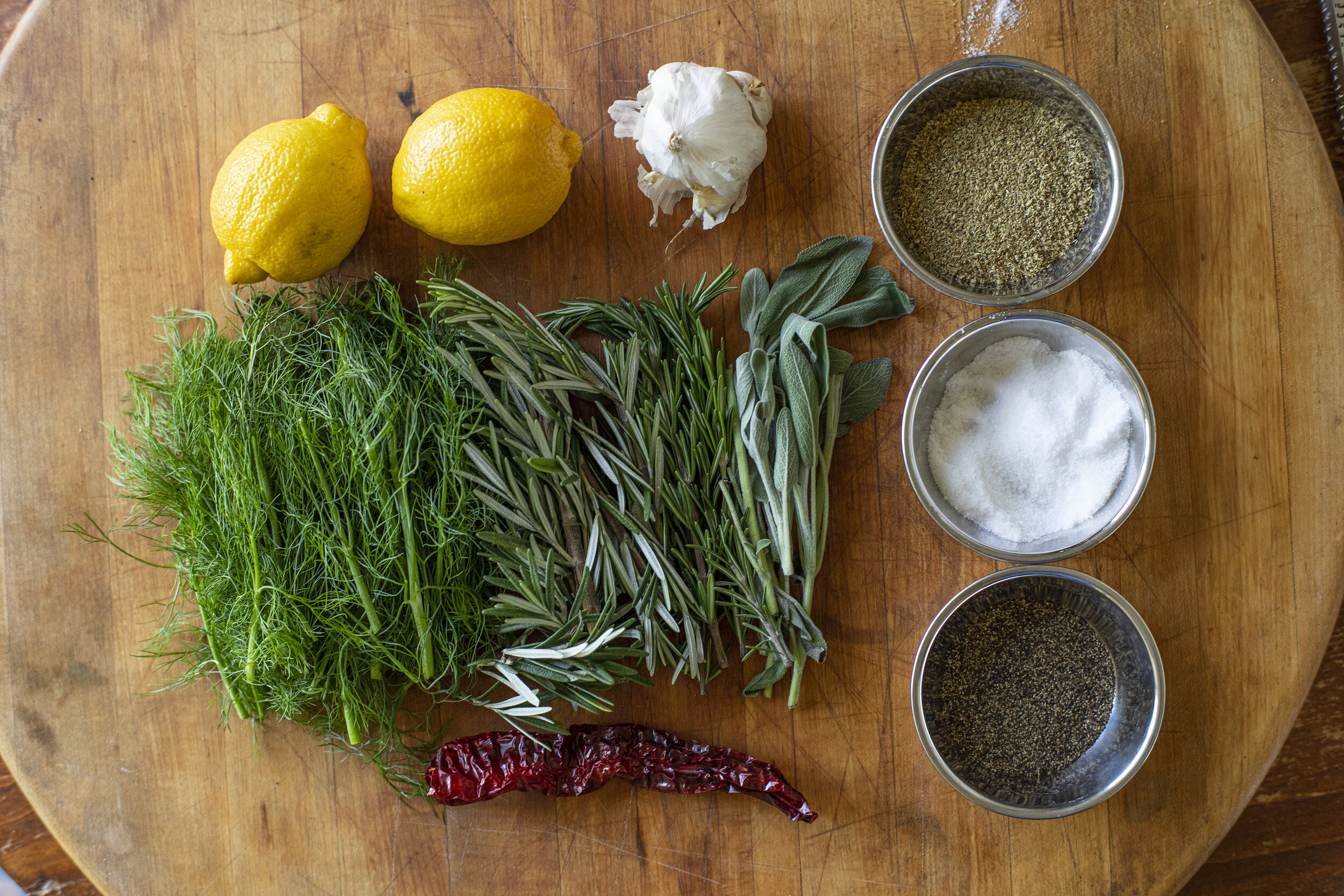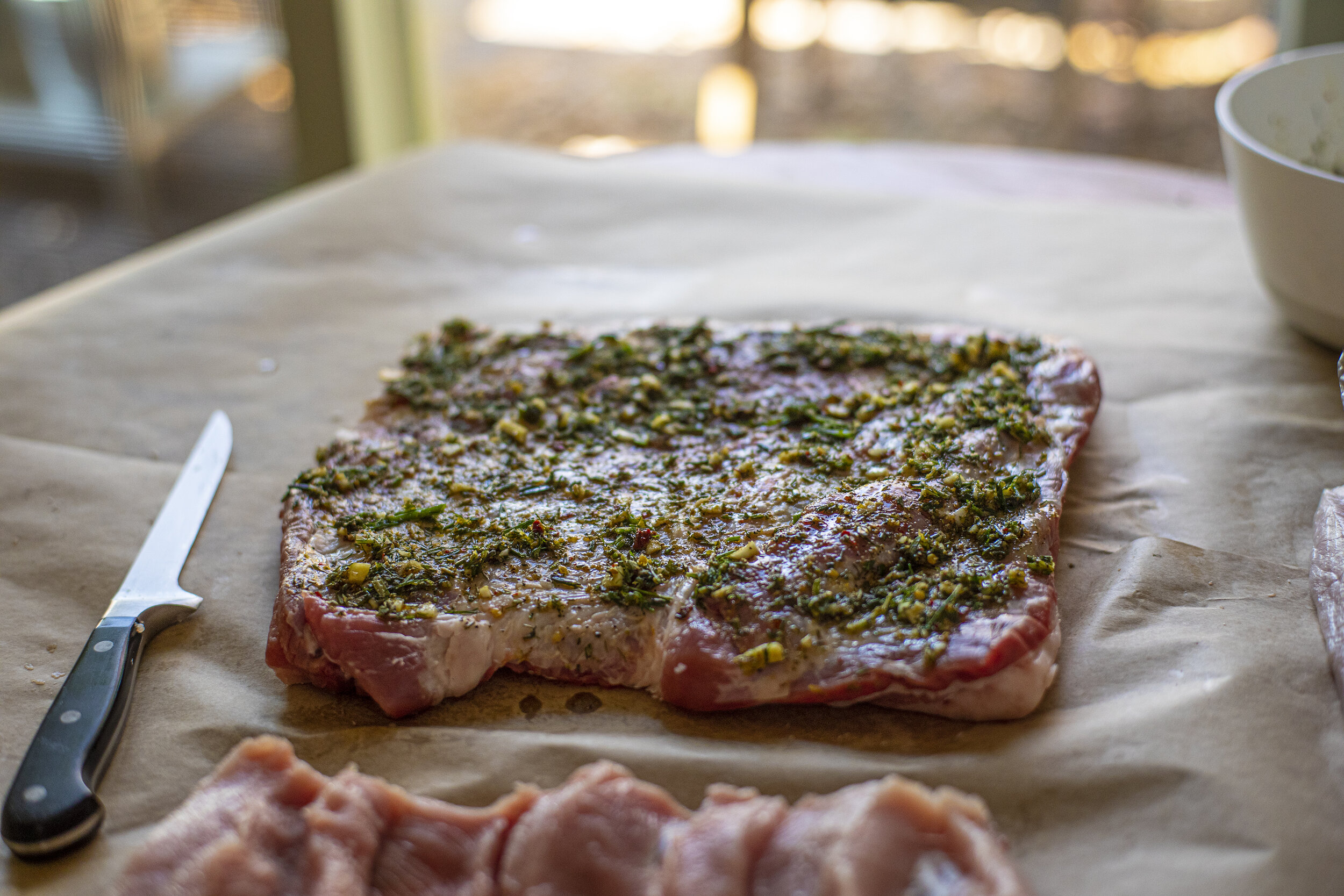Sfincione 2.0
An updated sfincione recipe with a few small tweaks. I find this version to be superior than it’s predecessor in a few key ways. The onions are finely diced (after sauteing) so they melt in your mouth. I add more sauce in this version giving it a sweeter, saucier bite. And I’ve added two layers of grated cheese which melds it all together.
Ingredients:
2 large onions
1 x 16 oz can of high quality tomatoes - crushed
Grated pecorino or caciocavallo
Anchovy fillets mashed into small pieces to taste
Dried oregano to taste
High quality olive oil
Toasted breadcrumbs preferably coarse and unseasoned
Salt and pepper
Pizza dough (see recipe here)
Directions:
Oil a rectangular pizza pan liberally. Spread the dough out with your fingers so that it covers the bottom evenly. Press into the dough to ensure you’re spreading it evenly across the pan. Allow it to relax a little if it’s pulling back into the center. Cover with a cloth and allow it to rest while you prepare the other ingredients.
Finely dice 2 yellow onions. Saute onions in olive oil on medium heat until golden and soft. Allow to cool down. Now mince the onions down even further so it almost forms a paste like consistency.
Using a spoon or your fingers, sprinkle the mashed anchovies across the surface of the dough, massaging them into the dough. Drizzle some more olive oil over the surface. Sprinkle on a layer of dried oregano evenly across the surface. Add a layer of grated cheese evenly across the surface.
Ladle on the crushed tomatoes evenly across the entire surface. Be generous here.
Add another layer of cheese evenly on top of the tomatoes. Spoon on the onion mixture and spread out evenly across the entire surface. Make sure it completely covers the surface.
Sprinkle on a layer of breadcrumbs, and work into the onions mixture with a spatula or your fingers. Drizzle the entire thing with some more olive oil.
Bake at 425 degrees for about 25 minutes, checking periodically. As it bakes the edges will crisp and the onions and breadcrumbs will be a beautiful golden brown.

































































